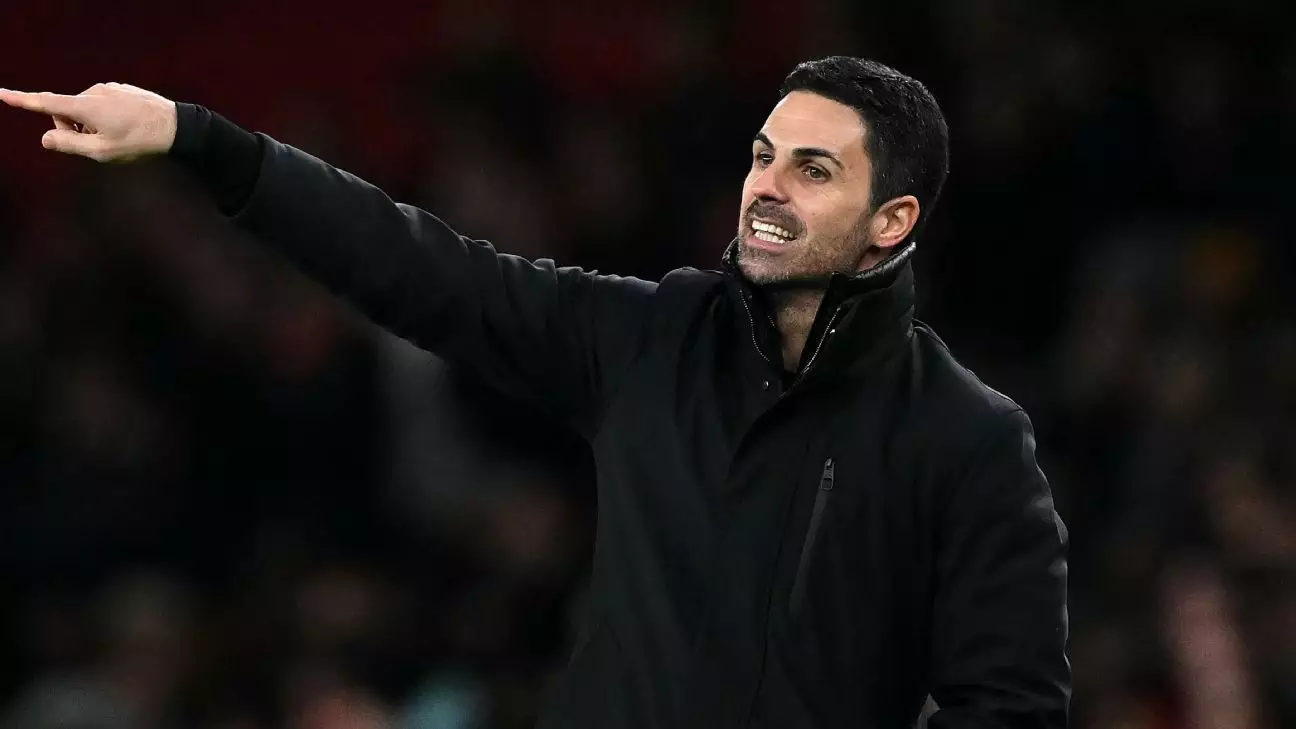In a compelling semifinal first leg of the Carabao Cup, Arsenal faced a costly setback against Newcastle United, resulting in a 2-0 defeat. Despite solid expectation from their performances, the Gunners squandered numerous opportunities, culminating in an unexpectedly high expected goals figure of 3.12—higher than any Premier League team this season that has failed to score. This statistic underscores the struggles faced by Mikel Arteta’s side and raises questions about the underlying factors contributing to such an uncharacteristic display.
Arteta postulated that one significant factor affecting Arsenal’s performance was their difficulty in adjusting to the Carabao Cup ball, which differs from the usual Nike ball used in Premier League matches. This notion introduces a fascinating angle, as it reflects how even the smallest variances, such as a ball’s design or material, can distinctly influence player performance and decision-making on the field. According to Arteta, the alternative Puma ball “flies a lot” more than its counterpart, creating a challenging environment, especially for forwards tasked with capitalizing on scoring opportunities.
Arteta’s comments emphasize the necessity for teams to adapt quickly to varied playing conditions. The challenge of transitioning between different ball types reveals the importance of mental resilience and flexibility for professional athletes. As the team regroups for the upcoming ground, it becomes paramount that they leverage learning from these mistakes rather than allow them to foster psychological barriers. The solution may not merely lie in practice but in fostering a positive mindset that embraces challenge rather than dreaded misstep.
Arteta’s experience in the coaching staff at Manchester City adds a layer of historical context regarding ball complaints. In 2017, Pep Guardiola famously critiqued the suitability of a Mitre ball, indicating a pattern that transcends individual player performance. This context suggests that ball consistency is crucial not only from a technical standpoint but also for the emotional climate of teams and their ability to compete effectively.
As Arsenal prepares for the return match on February 5, the emphasis must shift toward optimization of their adaptation process. This includes fine-tuning their approach to the Carabao Cup ball and improving conversion rates in subsequent matches. The opportunity remains for Arsenal to utilize this setback positively, enhancing their collective ability to face challenges head-on, ensuring they return stronger. With a commanding defensive performance required from Newcastle in the next match, Arsenal’s need for adjustment and resilience will define the next chapter in this knockout competition.
Ultimately, this incident serves as a reminder that great teams must possess not only talent but adaptability and a positive mindset, particularly when navigating the unpredictable nature of football.


Napsat komentář